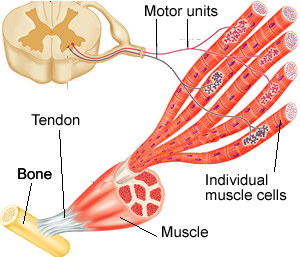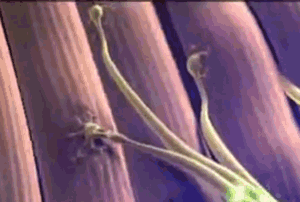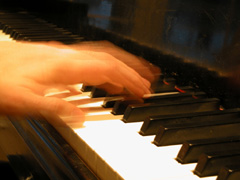Sports Science
Contraction of muscles
As we discussed earlier, muscle is composed of specialized cells capable of contracting when appropriately stimulated. Three different types of muscle cells exist:
-Cardiac muscle.
This forms the heart.
-Skeletal muscle (voluntary muscle) which
moves the bones of the skeleton.
-Smooth muscle (involuntary). This type of muscle is found in many internal
organs. It lines the digestive tract, bladder and blood vessels. We
have no voluntary control over this type of muscle hence it is sometimes
referred to as involuntary muscle. In this
unit of work we will concentrate on skeletal muscle.
A large muscle, such as the bicep, is controlled by thousands of nerve cells. Each nerve cell makes contact with a number of muscle cells. The point of contact is known as a neuromuscular junction.
The nerve cell and the muscle cells it makes contact with is called a motor unit.
When the nerve transmits a signal the whole motor unit is stimulated and the muscle cells contract together
Muscles with large motor units have coarse movements
Muscles with small motor units give fine, graded movements

The image on the right shows a motor unit responding to a nerve impulse. Click to see the detail inside the muscle cell.

Surely the force required of the muscles is less when playing the piano than it is during weight training.

